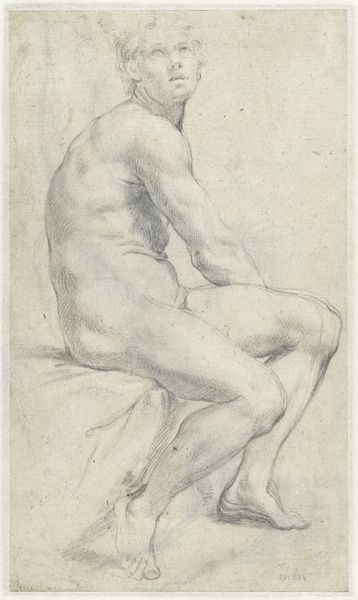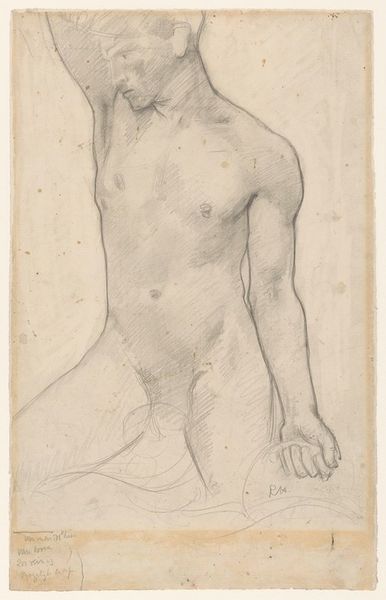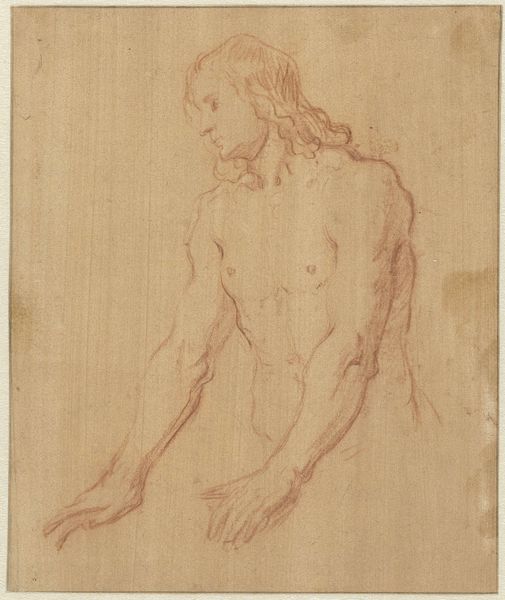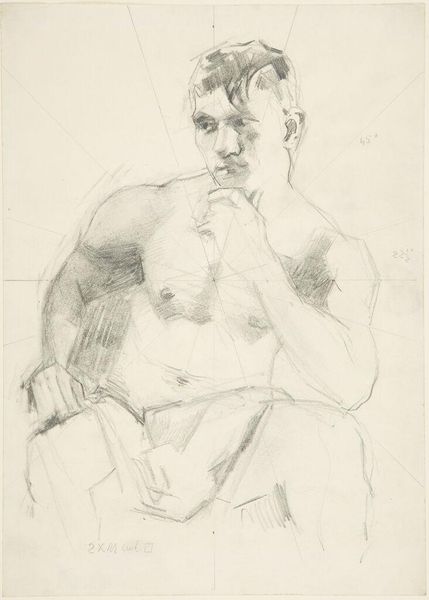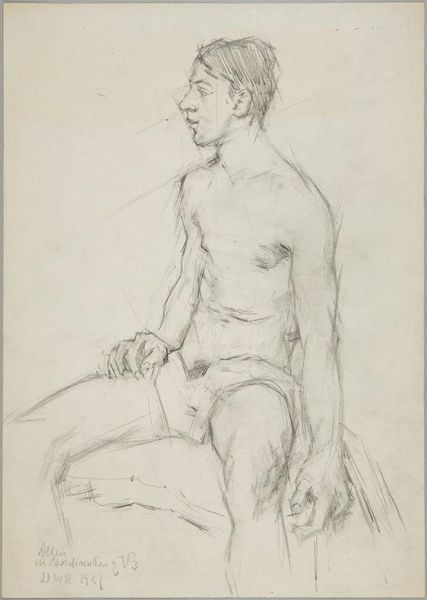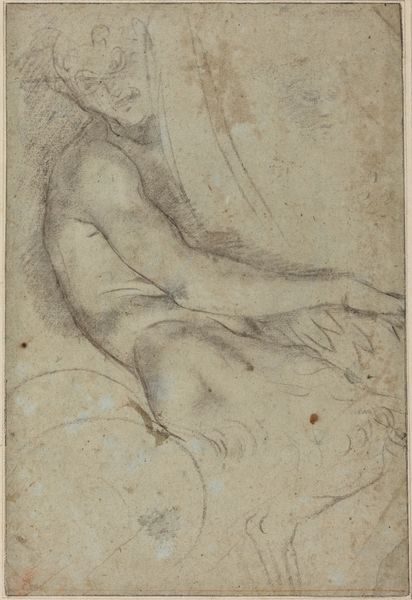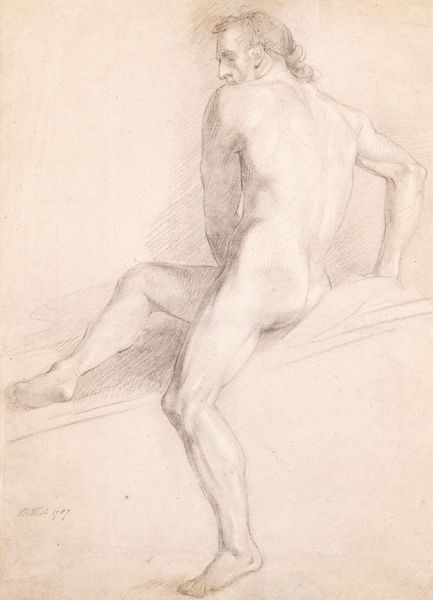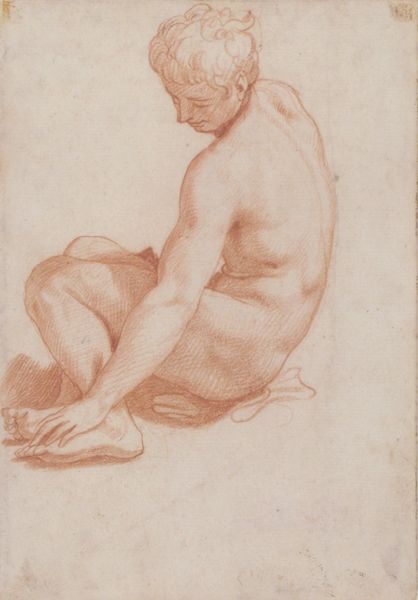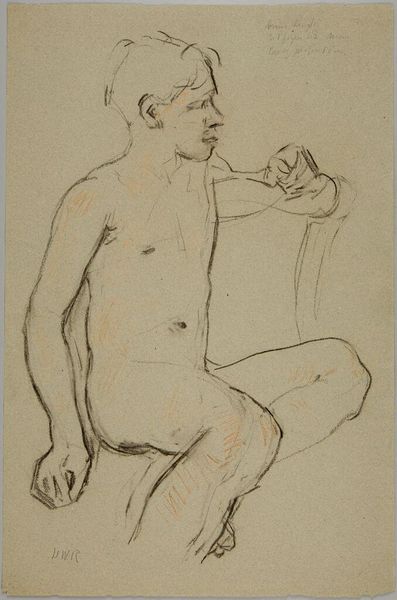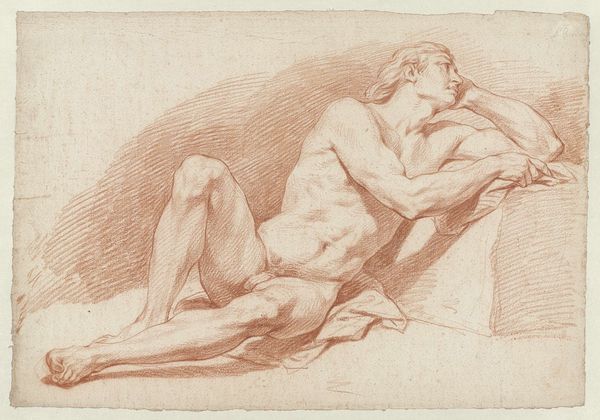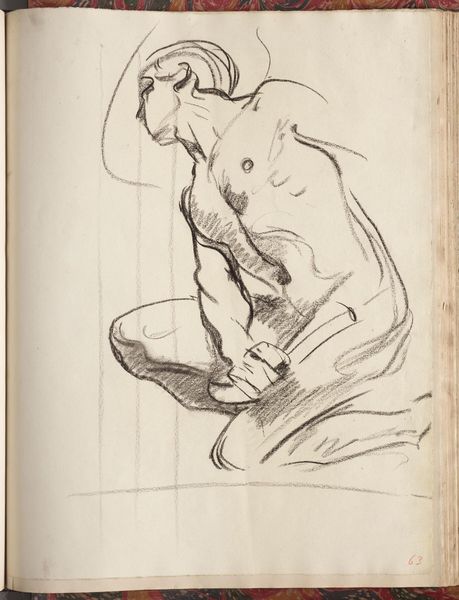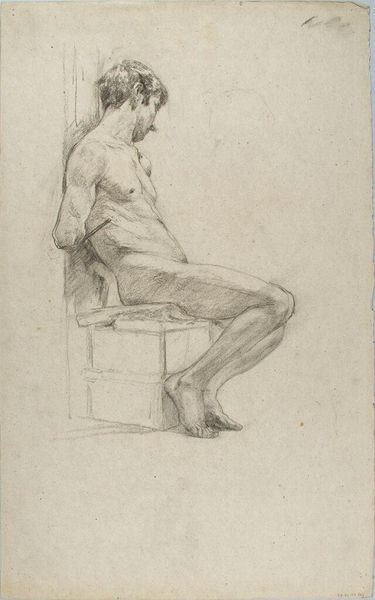
Dimensions: support: 175 x 112 mm support, secondary: 240 x 165 mm frame: 481 x 411 x 22 mm
Copyright: CC-BY-NC-ND 4.0 DEED, Photo: Tate
Editor: This is John Hamilton Mortimer’s sketch "Monstrous Male Figure, Caliban?" It's a striking drawing, mostly in pencil with some red chalk. It's unsettling, almost grotesque. What's your take on it? Curator: Mortimer's exploration of the monstrous aligns with a broader late 18th-century fascination with the sublime and the grotesque. Consider the social anxieties around class and what was considered "civilized." How might this image play into those anxieties, reflecting or challenging them? Editor: It's interesting to consider it within that framework, almost like a caricature of the lower classes. Curator: Precisely. The public role of art then was often to reinforce or question societal norms, making images like this politically charged. It encourages us to think about the power dynamics inherent in representation. Editor: That sheds new light on it. I had only focused on the monster, but it says much more about society than I initially thought! Curator: Indeed, art often holds up a mirror, reflecting our own prejudices and assumptions back at us.
Comments
tate 6 months ago
⋮
http://www.tate.org.uk/art/artworks/mortimer-monstrous-male-figure-caliban-t09101
Join the conversation
Join millions of artists and users on Artera today and experience the ultimate creative platform.
tate 6 months ago
⋮
Mortimer made a number of drawings of monsters in the 1770s. His other drawings show monsters engaged in violent struggles. This delicate image in chalk and pencil is more in the nature of a character study. During the mid-1770s Mortimer etched twelve of his own drawings as characters from Shakespeare, including Caliban from The Tempest. Since this creature also bears a resemblance to Caliban it may have been a study for the character. This is quite possible since the drawing is unfinished. Gallery label, September 2004
